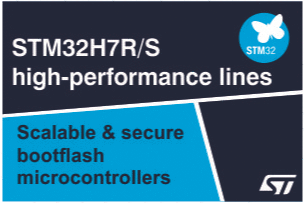The plastic material uses nanotechnology and contains the first solar cells able to harness the sun’s invisible, infrared rays. The breakthrough has led theorists to predict that plastic solar cells more efficient than current solar cell technology.
With the ever-increasing demand of electrical energy every one is looking towards Sun as a source of electrical energy along with its role as an important source of thermal energy. At the heart of all photovoltaic devices are two separate layers of materials, one with an abundance of electrons those functions as a “negative pole,” and one with an abundance of electron holes (vacant, positively-charged energy spaces) that functions as a “positive pole”. When photons from the sun or some other light source are absorbed, their energy is transferred to the extra electrons in the negative pole, causing them to flow to the positive pole and creating new holes that start flowing to the negative pole, thus producing electrical current which can then be used to power other devices.
Conventional semiconductor solar cells are made of polycrystalline silicon or, in the case of the highest efficiency ones, crystalline gallium arsenide. The use of these devices has been limited to date because production costs are so high. Even the fabrication of the simplest semiconductor cell is a complex process that has to take place under exactly controlled conditions, such as high vacuum and temperatures between 400 and 1,400 degrees Celsius. Normal solar panels are rigid, expensive, and their size is constrained by manufacturing techniques thus, limits their scalability to large area panels.
Typical module efficiencies for commercially available screen printed multicrystalline solar cells are around 12%. However, efficiencies vary from 6% for amorphous silicon-based solar cells to 30% or higher with multiple-junction research lab cells.
Plastic solar cells
Ever since the discovery (in 1977) of conducting plastics (polymers which feature conjugated double chemical bonds, that enable electrons to move through them), for which Prof. Alan Heeger was awarded a Nobel Prize, there has been interest in using these materials in the fabrication of solar cells.
Polymers offer the advantage of solution processing at room temperature, which is cheaper and allows for using fully flexible substrates, such as plastics. Thus, replacing the silicon with polymer nanowires would make the solar cell much lighter, and eventually cheaper. The technology takes advantage of recent advances in nanotechnology, specifically the production of nanocrystals and nanorods as shown in Figure 1. These are chemically pure clusters of form 100 to 100,000 atoms with dimensions on the order of a nanometer, or a billionth of a meter.
Because of their small size, they exhibit unusual and interesting properties governed by quantum mechanics, such as the absorption of different colors of light depending upon their size. Researchers are able to manufacture nanorods in aselenide, aiming for rods of a diameter – 7 nanometers to absorb as much sunlight as possible. They also aim for nanorods as long as possible – in this case, 60 nanometers. It will play an important role in developing an improved polymer solar cell using nanomaterial additives by c o m b i n i n g nanotechnology with plastic electronics.
Designing of Plastic Solar Cell
The plastic solar cell created by the Berkeley research group is actually a hybrid, comprised of tiny nanorods dispersed in an organic polymer or plastic. Figure 2 shows a schematic diagram of a hybrid “plastic” solar cell with a nanorod/polymer layer sandwiched between two electrodes.
The middle layer, a mere 200 nanometers thick, is ajumble of nanorods embedded in the semiconducting polymer. They mixed the nanorods with a plastic semiconductor, called P3HT – poly-(3- hexylthiophene) – and coated a transparent electrode with the mixture. The thickness, 200 nanometers – a thousandth the thickness of a human hair – is a factor of 10 less than the micron- thickness of semiconductor solar cells. When nanorods absorb light of a specific wavelength, they generate an electron plus an electron hole – a vacancy in the crystal that moves around just like an electron. The electron travels the length of the rod until the aluminum electrode collects it. Thus, an aluminum coating as shown in figure 3 acting as the back electrode complete the device. The hole is transferred to the plastic, which is known as a hole- carrier, and conveyed to the electrode, creating a current.
The electrode layers and nanorod/polymer layers could be applied in separate coats, making production fairly easy. Further, using rod-shaped nano-crystals rather than spheres provided a directed path for electron transport to help improve solar cell performance. These types of hybrid solar cells are reported to achieve a monochromatic power conversion efficiency of 6.9 percent, one of the highest ever reported for a plastic photovoltaic device. On the other hand a US renewable-energy firm Konarka is successful in developing its lightweight and flexible photovoltaics (PVs) making use of its photoactive dye to convert light into electricity. The researchers were able to reduce the temperature of the TiO2 sintering process. The team found a way to convert single TiO2 particles into a conductive network at 150ºC instead of the previous temperature of 450ºC. The new “cold sintering” technology transformed the number of possible applications and the manufacturing process itself by allowing the use of flexible plastic substrates.
Cost and Efficiency
Conventional silicon solar cells convert between 10 and 15 percent of the sun’s energy into electricity. The prototype plastic solar cells have efficiencies at present of only about 3 percent. At present, company people admit that even under optimal conditions, the plastic solar cells are only 7% efficient and are also terribly expensive.
They can cost 10 times more than the traditional, semiconductor solar cells. Today’s high-efficiency solar cells require very sophisticated processing inside a clean room and complex engineering to make the semiconductor sandwiches. And because they are baked inside a vacuum chamber, they have to be made relatively small. Where as, the hybrid solar cells can be produced in a laboratory beaker without clean rooms or vacuum chambers, which means that they’ll eventually be cheaper and easier to make than traditional solar cells. While traditional silicon-based solar cells can be easily broken, the plastic-based cells can withstand much more abuse. Thus, the efficiency of plastic solar cells will have to be improved prior to being placed as a commercial product. Moreover, the plastic solar cells’ short lifetimes when exposed to sunlight has to be increased.
Possible Applications
• Plastic formulations also open the possibility of printing solar cells onto various surfaces, much as ink is printed on a newspaper.
• Lightweight and flexible plastic solar cell painted on the back of it could power portable electronics equipments like PDAS, laptops and pocket calculators etc. anywhere we can access solar energy.
• The new cells also open up possibilities for wearable computing devices.
• Functions of plastic solar cell similar in visible region are needed in the infrared region for many imaging applications in the medical field and for fiber optic communications.
• Ultra high efficient plastic solar cells are expected to work well in low-light conditions and under artificial light along with the increased wavelength region.
• A big attraction of dye-based PVs is that they can be coloured and even patterned to resemble normal roofing material or military camouflage. The US military appears to agree, having already placed orders for PV material as part of on-going development programmes with army, navy, air- force and marine corps.
Future Prospects
The flexible photovoltaics could harness half of the sun’s spectrum not previously accessed and some of the obvious improvements include better light collection and concentration, which already are employed in commercial solar cells. In their first generation solar cells, the nanorods are jumbled up in the polymer, leading to losses of current via electron-hole recombination and thus lower efficiency. To make significant improvements in the plastic/nanorod mix, too, ideally packing the nanorods closer together, perpendicular to the electrodes, using optimal polymer- the nanorods would transfer their electrons more directly to the electrode. It is hopped to tune the nanorods to absorb different colors to span the spectrum of sunlight. An eventual solar cell might have three layers, each made of nanorods that absorb at different wavelengths thus, combining infrared and visible photovoltaics could allow up to 30 per cent of the sun’s radiant energy to be harnessed. Further is the idea of being able to do the same coating process on a fibre, instead of coating multiple layers on a flat surface, by dipping a fibre through different solutions to create a PV fibre. Being able to weave “solar” fibres into textiles could open up a huge market for PVs, essentially the opportunity to power anything that needs a battery.






